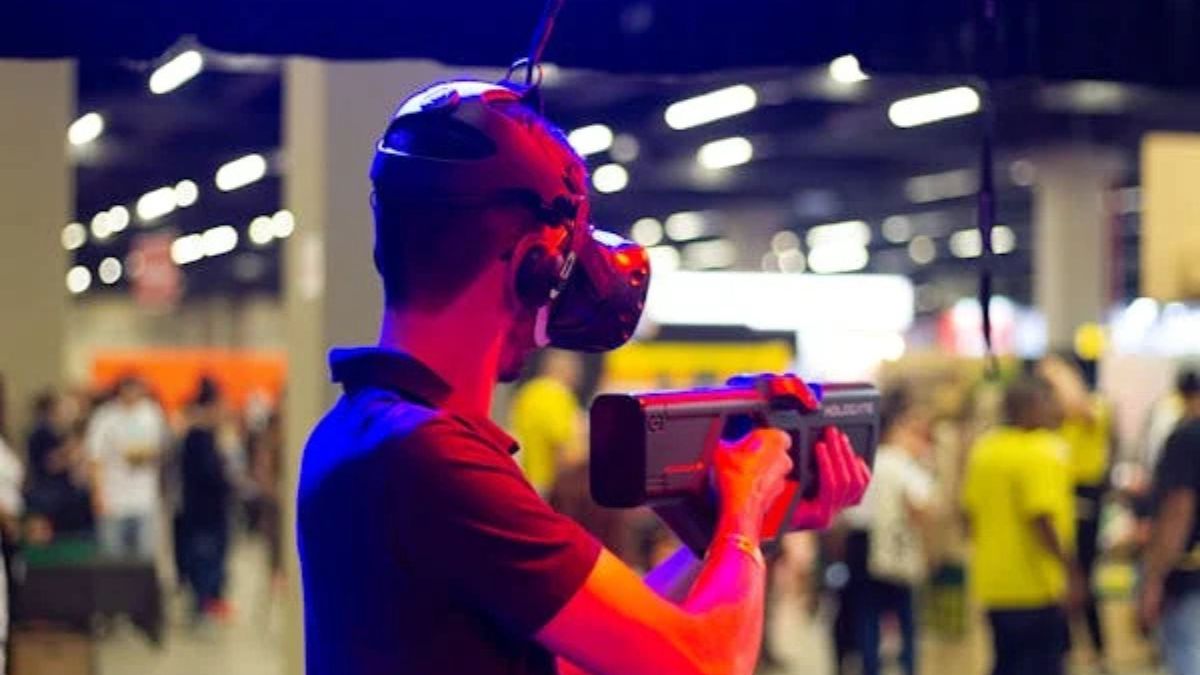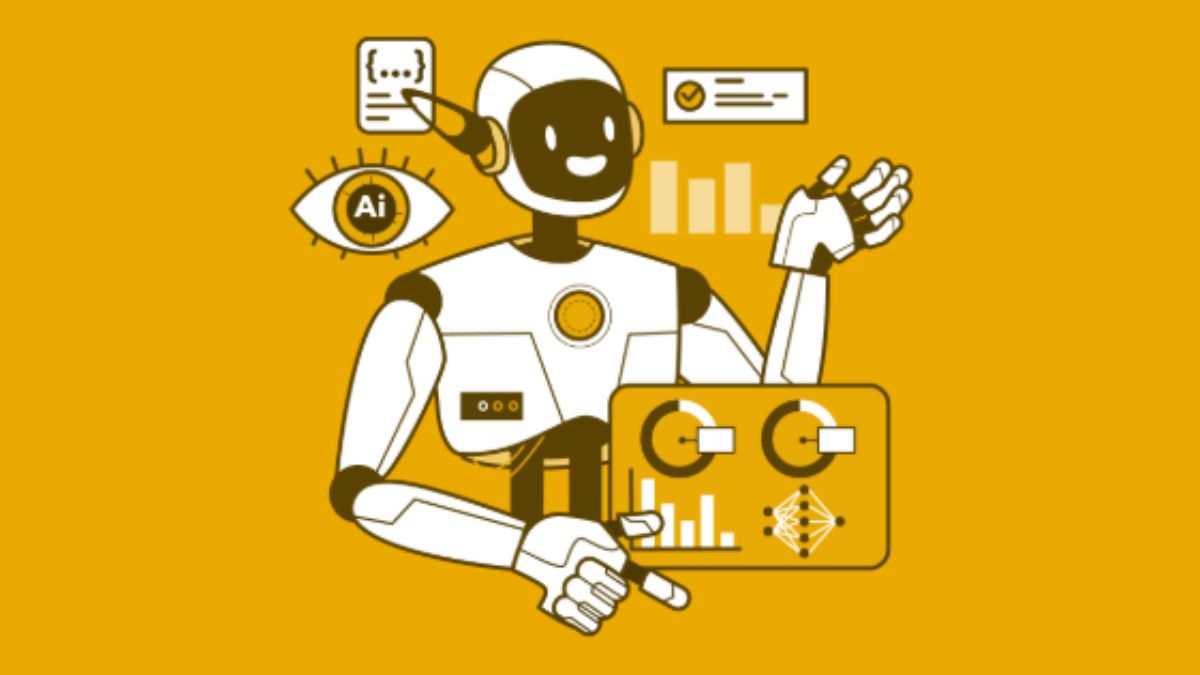AI
Recruitment In The Future: Harnessing AI and Automation for Better Hiring Decisions

Introduction to AI and Automation in Recruitment
Recruitment has long been a challenging endeavor, involving the tedious tasks of screening resumes, scheduling interviews, and ensuring the right fit for the company culture. With the advent of AI and Automation, these processes are undergoing significant transformations, making them more efficient and effective. Utilizing advanced candidate engagement tools ensures that both recruiters and candidates have a seamless experience, making every step of the process smoother and more user-friendly.
AI in recruitment spans a variety of applications, including resume parsing, candidate matching, and even chatbots that engage with potential hires. The Automation of these processes essentially speeds up the recruitment cycle, allowing companies to hire suitable candidates more quickly. Moreover, these technologies help in eliminating human errors and biases, paving the way for a more inclusive recruitment process.
How AI is Revolutionizing Hiring Processes
Artificial Intelligence provides special powers that improve hiring procedures. In only a few minutes, AI-powered systems can go through thousands of resumes to find ones that almost exactly fit the job requirements. This improves the accuracy of locating qualified individuals while also saving time. With the help of machine learning algorithms, these AI systems are able to continuously increase the accuracy of their matching, gradually improving their suggestions by learning from previous hiring decisions.
An AI system may be trained, for instance, to search for particular keywords associated with experience or talents connected to a job, which would allow it to quickly weed out unfit applicants and highlight the most promising ones. In this manner, the first screening procedure is greatly simplified, which lessens the effort required by human recruiters. AI can also analyze sentiment in cover letters and other types of writing, providing insights into a candidate’s personality traits that might not be evident from a resume alone.
The Benefits of Data-Driven Recruitment
Utilizing data in recruitment can lead to more informed decisions. Predictive analytics can forecast a candidate’s potential performance and fit within the company’s culture. For example, historical data on employee performance can be analyzed to identify the traits and experiences most commonly associated with success in a particular role. Such insights can help companies select candidates who are more likely to succeed and stay with the company longer.
Moreover, analyzing data can help minimize unconscious biases, thus promoting diversity and inclusion. By focusing on data-driven metrics rather than subjective criteria, recruiters can ensure that their hiring processes are fairer and more transparent. This approach also aids in meeting compliance requirements and can improve a company’s reputation as an inclusive and fair employer.
Streamlining Tasks with Automation
Automation of repetitive tasks such as sending interview reminders, collecting feedback, and onboarding can significantly reduce the administrative burden on recruiters. Automatic scheduling tools can find and organize available time slots for interviews, eliminating the back-and-forth communication typically involved in this step. Furthermore, automated feedback collection helps gather insights from interviewers promptly, ensuring that no valuable information is lost.
This allows them to focus more on candidate engagement and improving the overall hiring experience. Automating these processes also ensures consistency and reliability, as well as the ability to scale up operations without a proportional increase in workload. For instance, during high-volume hiring periods, automated systems can handle the increased activity more efficiently than manual processes ever could.
Improving Candidate Experience
AI and Automation not only benefit recruiters but also enhance the candidate experience. Tools that use AI for personalized communication can ensure that candidates are well-informed and engaged throughout the hiring process. Automated email workflows can send timely updates to candidates, letting them know their application status at every stage. This level of transparency can significantly improve a candidate’s impression of the company.
Moreover, chatbots powered by AI can answer candidate queries in real-time, providing instant support and guidance. These chatbots can handle a wide range of inquiries, from basic questions about the job role to more complex queries about the hiring process. This instant communication reduces uncertainty for candidates, making them feel more valued and respected.
Challenges and Considerations
Even while Automation and AI have many advantages, there are also issues to take into account. Preventing data security breaches and ensuring the ethical usage of AI are critical issues. Businesses must invest in solid cybersecurity safeguards to safeguard the vast volumes of personal data they process. In order to prevent the reinforcement of preexisting prejudices, AI systems must also have transparent and equitable algorithms.
In addition, AI systems must be updated and trained on a constant basis in order to meet changing hiring requirements. To continue becoming precise and valuable, AI algorithms need to be updated and retrained on a regular basis. Companies must set aside funds for these systems’ continuing upkeep and advancement. Along with technical changes, this also entails the addition of fresh data sources and the improvement of already-existing algorithms.
The Future of Recruitment
As recruitment technology continues to advance, staying informed and adaptable is crucial. The integration of AI and Automation is not just a trend but a necessary evolution for efficient and effective hiring. Companies that embrace these technologies are likely to see better hiring outcomes and reduced turnover rates. By leveraging AI and Automation, companies can create a more agile and scalable recruitment process that is ready to adapt to the demands of a dynamic job market.
In the future, we can expect further innovations in AI and Automation within the recruitment domain. This may include advanced virtual reality (VR) interview platforms, more sophisticated predictive analytics, and even greater personalization in candidate interactions. The future of recruitment looks promising, with technology paving the way for more effective and equitable hiring processes.
Conclusion
Automation and AI are entirely changing the job market. Businesses can attain more impartial, accurate, and efficient hiring procedures by utilizing these technologies. The future of hiring looks bright, with better results anticipated for both recruiters and candidates. Those who keep ahead of the curve will benefit from a more efficient and successful hiring process as the profession continues to change.
AI
The Ultimate Guide to AI Face Swap

Introduction to AI Face Swap
What is AI Face Swap?
Imagine taking someone’s face and putting it on another person’s body in a video or photo—and it looks totally real. That’s AI face swap. It’s a cool but slightly eerie piece of tech powered by artificial intelligence that can change faces in images and videos in seconds.
Evolution of Face Swapping Technology
Face swapping used to be a party trick on Snapchat. Now? It’s Hollywood-grade. The shift from silly filters to ultra-realistic deepfakes is powered by advanced AI algorithms. What once took hours of editing now happens with a tap.
How AI Face Swap Works
The Role of Machine Learning & Neural Networks
Behind the scenes, neural networks (especially GANs—Generative Adversarial Networks) do the heavy lifting. These networks learn how faces move, express, and shift with lighting. They map the structure of both the original and swapped faces to blend them naturally.
Deepfake vs AI Face Swap: What’s the Difference?
Both use AI, but deepfakes aim for hyper-realistic video fakes, often for controversial content. Face swap, on the other hand, focuses more on fun, art, and content creation (though the line can blur sometimes).
Real-Time Face Swapping: How It’s Possible
Apps now use your camera and apply AI face swap instantly—yes, real-time. By detecting facial landmarks and layering images on the fly, it gives a live preview with jaw-dropping accuracy.
Top AI Face Swap Tools and Apps
Reface App
This one went viral for a reason. With just a selfie, Reface lets you put your face in movie scenes, memes, and music videos. It’s intuitive and fun.
FaceMagic
FaceMagic uses AI to let you try out a bunch of roles, characters, and expressions. It’s perfect for content creators and TikTok lovers.
Zao & Other Trending Platforms
Zao made waves in China—it could generate realistic face swaps in seconds. There’s also FaceSwap Live, FacePlay, and Morphin, each offering their own twist.
Applications of AI Face Swap in Real Life
Entertainment & Memes
From viral meme videos to funny gifs, AI face swap is a meme-maker’s dream. Content goes viral when faces are swapped into unexpected places.
Film Industry and CGI
Actors getting older? No problem. AI face swap is being used to de-age them or even replace them if they’re unavailable. Think Paul Walker in Fast & Furious or Luke Skywalker in The Mandalorian.
Marketing & Advertising
Marketers use it to personalize experiences—like seeing yourself in a commercial. It increases engagement and curiosity.
Gaming and Virtual Reality
Want to be the hero in your own game? AI face swap tech is now integrated into VR avatars and character customization for next-level immersion.
Benefits of AI Face Swap
Content Creation Made Easier
Forget Photoshop—just snap a pic and you’re in a blockbuster. AI makes high-quality editing accessible for anyone.
Cost-Effective for Filmmakers
No more reshoots or actor double trouble. AI face swap saves time, budget, and production headaches.
Enhancing User Engagement on Social Media
When people see themselves in trending content, they’re more likely to share it. That’s social media gold.
The Controversies Around Face Swapping
Ethical Concerns
Sure, it’s fun… but it can cross the line. What if your face is used in a video you never approved?
Consent and Misuse
One of the biggest concerns is using someone’s likeness without their knowledge or permission. That’s not just creepy—it’s potentially illegal.
Political Deepfakes and Misinformation
Fake speeches, fake videos, fake news. AI face swap tech is already being used in misinformation campaigns, especially in politics.
Legal and Privacy Issues
Countries Regulating Face Swap Tech
The US, China, and parts of Europe are now drafting laws to regulate AI-generated media. In some places, publishing deepfakes without disclosure is punishable by law.
GDPR and User Consent
In Europe, under GDPR, using someone’s face in AI-generated content without permission is a no-go. You must get clear consent.
How to Use AI Face Swap Responsibly
Always Get Consent
Before using someone’s face—even for fun—get their permission. It’s just good etiquette (and smart legally).
Add Disclaimers in Content
Let your audience know if something is AI-generated. This builds trust and avoids confusion or controversy.
Avoid Manipulating Sensitive Topics
Steer clear of politics, crime scenes, or controversial figures. These swaps can mislead or cause real-world damage.
Future of AI Face Swap
Improved Realism with Generative AI
Soon, AI face swaps will be indistinguishable from reality. Expect smoother transitions, accurate voice cloning, and even facial aging predictions.
Integration in AR/VR and Metaverse
As the metaverse grows, AI face swap will play a huge role in how we present ourselves—swapping faces, creating avatars, or even building digital twins.
Conclusion:
AI face swap is both fascinating and frightening. From creating viral content to transforming film production, its potential is undeniable. But with great power comes great responsibility. As this technology becomes more powerful and accessible, the line between fun and harm becomes thinner. Use it creatively—but use it wisely.
FAQs:
1. Is AI face swap the same as deepfake?
Not exactly. While both use AI, deepfakes often focus on highly realistic videos that mimic real people’s behavior, sometimes for deceptive purposes. Face swap is broader and usually for fun or creativity.
2. Can AI face swap be done in real-time?
Yes! Many apps now support real-time face swapping using your smartphone camera, thanks to advanced processing and AI models.
3. Are AI face swap apps safe?
Most reputable apps are safe, but always read their privacy policies. Some might collect facial data or usage habits.
4. What is the best free AI face swap app?
Reface, FaceMagic, and FacePlay are popular free apps with impressive results. Just check their limitations and watermark policies.
5. How can I protect myself from being used in AI face swaps?
Avoid uploading high-res photos publicly, disable facial recognition settings where possible, and report misuse to platforms or authorities.
AI
Revolutionizing Industries with Artificial Vision System

Artificial vision system is rapidly transforming how we interact with and interpret the world. By combining cutting-edge technologies in computer vision, machine learning, and hardware design, these systems enable machines to process and analyze visual data in ways that were previously only possible for humans. From automating quality control in manufacturing to enhancing diagnostics in healthcare, artificial vision system are driving innovation across industries.
This blog will explore the concept of artificial vision systems, their key components, and their practical applications. We’ll also highlight how businesses can leverage these systems to improve efficiency, reduce errors, and gain a significant competitive edge.
What Are Artificial Vision Systems?
Artificial vision systems—or machine vision—enable machines to “see” and interpret their surroundings. They rely on advanced algorithms and high-resolution imaging hardware to capture and process visual data in real time. Unlike traditional cameras, which simply record images, artificial vision systems analyze these images and extract actionable insights.
A typical artificial vision system consists of three major components:
- Image Acquisition Devices – These include cameras, sensors, or laser scanners that capture visual data.
- Processing Hardware and Software – High-end processors run algorithms that analyze images, identify patterns, and detect anomalies.
- Actuators or Robots – These execute tasks based on the insights provided by the vision system, such as rejecting defective items on an assembly line.
The Benefits of Artificial Vision Systems
Artificial vision systems offer businesses several compelling advantages:
- Enhanced accuracy – AI-powered analysis reduces human error, ensuring precision in tasks like quality control or medical diagnosis.
- Increased speed – Machines process visual data far faster than humans, enabling real-time decision-making.
- Cost efficiency – Automation decreases the need for manual labor, cutting operational costs.
- Scalability – Vision systems can handle vast amounts of data without a decline in performance, making them suitable for high-volume applications.
Real Impact Across Industries
Artificial vision systems are not a futuristic idea—they are already reshaping a range of industries. Here’s a closer look at their applications across sectors:
1. Manufacturing – Quality Control at Scale
One of the most prominent applications of artificial vision systems is in manufacturing, where they play a crucial role in quality assurance. Cameras paired with AI software inspect products on production lines, instantly identifying defects or irregularities. For example:
- Electronics Manufacturing – Detecting microscopic cracks in circuit boards or chips.
- Automotive Industry – Inspecting weld seams and paint finishes for imperfections.
By automating inspections, companies can maintain consistent quality while drastically lowering manual inspection costs.
2. Healthcare – Diagnostic Precision
Healthcare providers increasingly rely on machine vision for diagnostics and treatment. Advanced imaging and AI algorithms make it possible to:
- Analyze X-rays, CT scans, and MRIs to detect anomalies such as tumors or fractures.
- Monitor patients for signs of distress in intensive care or surgical settings.
- Guide robotic-assisted surgeries with unparalleled accuracy.
For instance, AI-driven vision systems have achieved up to 99% accuracy in diagnosing specific conditions, significantly enhancing treatment outcomes while reducing diagnostic errors.
3. Retail and Warehousing – Inventory Optimization
Retailers and logistics companies leverage artificial vision systems for real-time inventory tracking and warehouse management. These systems:
- Use cameras and AI to scan shelves automatically, ensuring items are stocked correctly.
- Monitor shipments and detect damaged goods before delivery.
- Enable seamless checkout experiences through vision-based self-checkout kiosks.
Amazon’s fulfillment centers are a testament to the efficiency of machine vision, with robots and AI systems improving order accuracy and reducing processing times.
4. Agriculture – Precision Farming
Precision farming is revolutionizing agriculture, with artificial vision systems playing a key role in improving crop yields. Drones equipped with machine vision:
- Monitor plants for signs of disease, nutrient deficiencies, or pest infestations.
- Analyze soil quality and water levels to optimize irrigation.
- Ensure efficient harvesting by identifying ripe produce.
The ability to collect detailed visual data of farmland ensures more informed decisions, boosting productivity and reducing waste.
5. Transportation and Autonomous Vehicles
Perhaps the most well-known application of artificial vision is in autonomous vehicles. Self-driving cars rely on:
- Lidar and cameras that detect road signs, other vehicles, and pedestrians.
- AI systems to process this data and make split-second decisions to ensure safety.
This technology is also transforming aviation and marine navigation, where precise vision systems enhance safety and operational efficiency.
The Future Potential of Artificial Vision
The continued development of artificial intelligence and deep learning algorithms will only expand the capabilities of artificial vision systems. Some emerging trends and advancements include:
- 3D Imaging and Augmented Reality (AR) – Enabling machines to interpret depth for more complex visual tasks like object manipulation.
- Edge Computing Integration – Allowing vision systems to process data locally for faster response times.
- Sustainability Applications – Helping enterprises achieve sustainability goals through better resource monitoring, like identifying energy inefficiencies in real-time.
With breakthroughs on the horizon, artificial vision systems are poised to become indispensable tools for every industry.
Leverage Artificial Vision for Your Business
It’s clear that artificial vision systems can transform how businesses operate, offering unprecedented efficiency and accuracy. Whether you’re in manufacturing, healthcare, retail, or any other sector, integrating machine vision could give you the edge you need to stay competitive.
Start exploring the world of artificial vision today. Evaluate your business’s current operations, identify areas for automation or improvement, and consult AI experts to deploy the right solution tailored to your needs.
AI
How Interview Copilot AI is Transforming Hiring and Candidate Success

In today’s competitive job market, where both employers and candidates strive to stand out, advanced technology is reshaping traditional hiring practices. Among these innovations, Interview Copilot AI is making waves by revolutionizing how interviews are conducted and ensuring better outcomes for employers and job seekers alike.This Intelligent Technology lets companies to streamline their recruitment operations, increases candidate engagement, and enhances outcomes. Let’s take a look at how this new device contributes to melding the hiring processes and the win rates of candidates.
The Evolution of Interviews with AI
An interview was once limited to a face-to-face meeting or a phone call, but technology has completely transformed this narrative. Nowadays, we have tools like Interview Copilot that conduct online assessments and video interviews in a matter of minutes. To put it bluntly, technology has made recruitment simpler, faster, and more convenient. This includes the use of AI to conduct interviews that eliminates the risks of biases falling into the process, errors occurring through automation, and having a much-needed neutral perspective on the entire recruitment.
Interviews Copilot has AI technology that virtually steps in for the candidates and recruiters providing incisive real-time analysis alongside feedback. By examining responses, behavioral tendencies, and delivering solutions to assist in automated suggestion making, the system is able to ensure safer tactics. At the end, this translates into an improved quality of hiring. Furthermore, this kind of analysis allows interviews to be more productive, efficiently focused, and measured.
How Interview Copilot AI Benefits Recruiters
For recruiters, the task of screening and interviewing candidates can be overwhelming, especially when faced with high volumes of applicants. AI Interview Copilot alleviates this burden by acting as a co-pilot during the entire process. It helps recruiters prepare targeted questions, offers real-time prompts, and even generates post-interview summaries.
The AI Interview Copilot offers meaningful value by assessing the candidates’ verbal and non-verbal cues to determine their communication skills, confidence levels, and overall fitness for the position. This approach removes bias associated with personal judgment by providing data-based reasoning for every decision made when hiring.
An additional significant benefit is that AI Interview Copilot’s capabilities allow for the homogenization of the interviews. This makes it possible to assess all applicants with the same criteria which minimizes the risk of unintentional discrimination. This feature is fundamental for corporations that have a strong emphasis on diversity and inclusion.
Empowering Candidates for Success
In the case of Interview Copilot, owing to its ease of access, it is equally beneficial to both recruiters and job seekers. Job interviews may be stressful in some instances and many candidates find it difficult to verbalize their ideas in the appropriate way. Interview Copilot AI helps the candidate by continually providing suggestions that guide and enhance the candidate’s responses.
The AI integrated feedback enables candidates to monitor and polish their answers during mock interviews, ensuring that they perform to the best of their ability when it really matters. In addition, the use of AI Interview Copilot to structure the interview makes it less traumatic for the candidate and allows them to demonstrate their talent more easily.
One more fascinating aspect of Interview Copilot is its multifunctionality where it can perform different types of interview mockups. This ensures that candidates will be able to answer questions in all forms and types so that they are fully prepared for the interview. In the end, this kind of preparation increases the chances of success and is more like reality than potential.
Enhancing the Hiring Experience
Acquiring Talent is not only about getting an ideal employee, but rather managing everyone’s experience positively. Taking too much time during the interview process or doing it disorganized can affect an employer’s reputation negatively. With the help of Interview Copilot AI, this problem is managed as the process is efficient, interesting and very professional.”
Interview AI Copilot eliminates the mess of scheduling interviews, keeping track of feedback and everything in between. The application compliments the existing Human resources software which makes it easy and adaptable for companies without changing their systems too much. In addition to this, it allows recruiters to spend more time engaging with prospects rather than tending to paperwork.
For the candidates, Interview Copilot offers an unbiased and organized process which increases their trust and confidence in the selection process. Having the assurance that all evaluations are based on established benchmarks motivates candidates to put their best foot forward.
AI Interview Copilot and the Future of Hiring
The continual increase in modernized methods such as Interview Copilot AI comes as no surprise as companies look to maintain their edge. This technological innovation is already taking the world by storm and is expected to significantly outpace the competition. Companies that employ AI to assist in the recruitment process are able to find and hire the most suitable candidates while reducing their potential turnover rate and ultimately fleshing out robust teams.
It is only a matter of time before Interview Copilot AI is adopted by every sector across the board as it is bound to significantly enhance recruitment techniques that already exist. It possesses an enhanced ability to learn and evolve which allows it to perform its functions across an array of niches. Moreover, with the rapid advancement in AI technology, Interview Copilot will enable employers to make highly confident predictions regarding future employees performance.
Conclusion
Everything around us is changing, and so is how people are recruited to a company. Interview Copilot AI is leading this change, and it is proof that recruiting is more scientific now than it used to be, and this has resulted in better outcomes. AI Interview Copilot turns the tables by becoming the go-to solution for interviewers who have to prepare their candidates and for those who want to be prepared for their interview. This supportive tool helps maximize success for all participants of jousts through interviews. This rather amazing innovation will make sure that the global problems of today are dealt with properly through better hiring.
-

 HEALTH2 years ago
HEALTH2 years agoIntegrating Semaglutide into Your Weight Loss Plan: A Practical Guide
-

 HOME IMPROVEMENT2 years ago
HOME IMPROVEMENT2 years agoHow to Choose the Perfect Neutral Area Rug for Every Room
-

 LAW1 year ago
LAW1 year agoTeenage Drivers and Car Accidents in California: Risks and Parental Liability
-

 LAW1 year ago
LAW1 year agoPost-Divorce Considerations in California: Modifications and Long-Term Planning
-

 CONSTRUCTION1 year ago
CONSTRUCTION1 year agoConstruction Site Safety Regulations in New York and Your Rights as a Worker
-

 HOME2 years ago
HOME2 years agoSandra Orlow: The Teen Model Who Captivated the Internet
-

 FINANCE1 year ago
FINANCE1 year agoDigital Asset Management in Florida Estate Planning
-

 LAW1 year ago
LAW1 year agoKentucky’s School Football: Concussions, Injuries, and Legal Options
